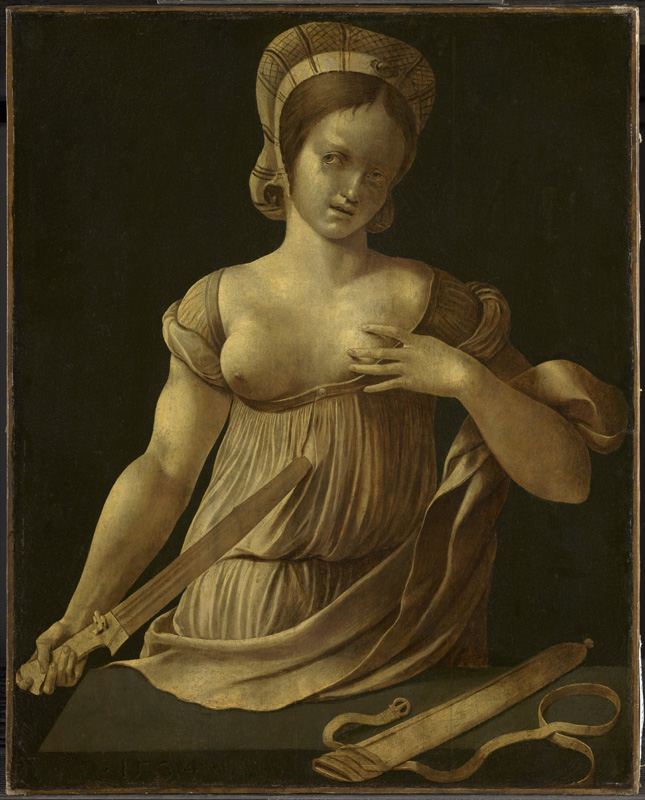
december 22, 2012–APRIL 21, 2013
TIME AND PLACE
Examining a work of art from the back can provide a telling glimpse into the work's historical context. As the nineteenth-century art historian Alois Riegl observed: "a scrap of paper with a brief and insignificant note contains a whole series of artistic elements—the form of the piece of paper, the letters, and their composition—which apart from their historical value are relevant to the development of paper, writing, [and] writing instruments." Like Riegl's scrap of paper, the backs of the objects in this exhibition can offer insight into the collecting tastes, artistic practices, and cultural circumstances of past times and places.
Lucretia and a work attributed to Jan Gossaert, Portrait of a Gentleman, were originally painted on two sides of a single panel. At some point before entering the Clark's collection, the panel was split in two, creating two distinct works.
Unknown artist, Lucretia, 1534. Gift of the Executors of Governor Lehman's Estate and the Edith and Herbert Lehman Foundation

